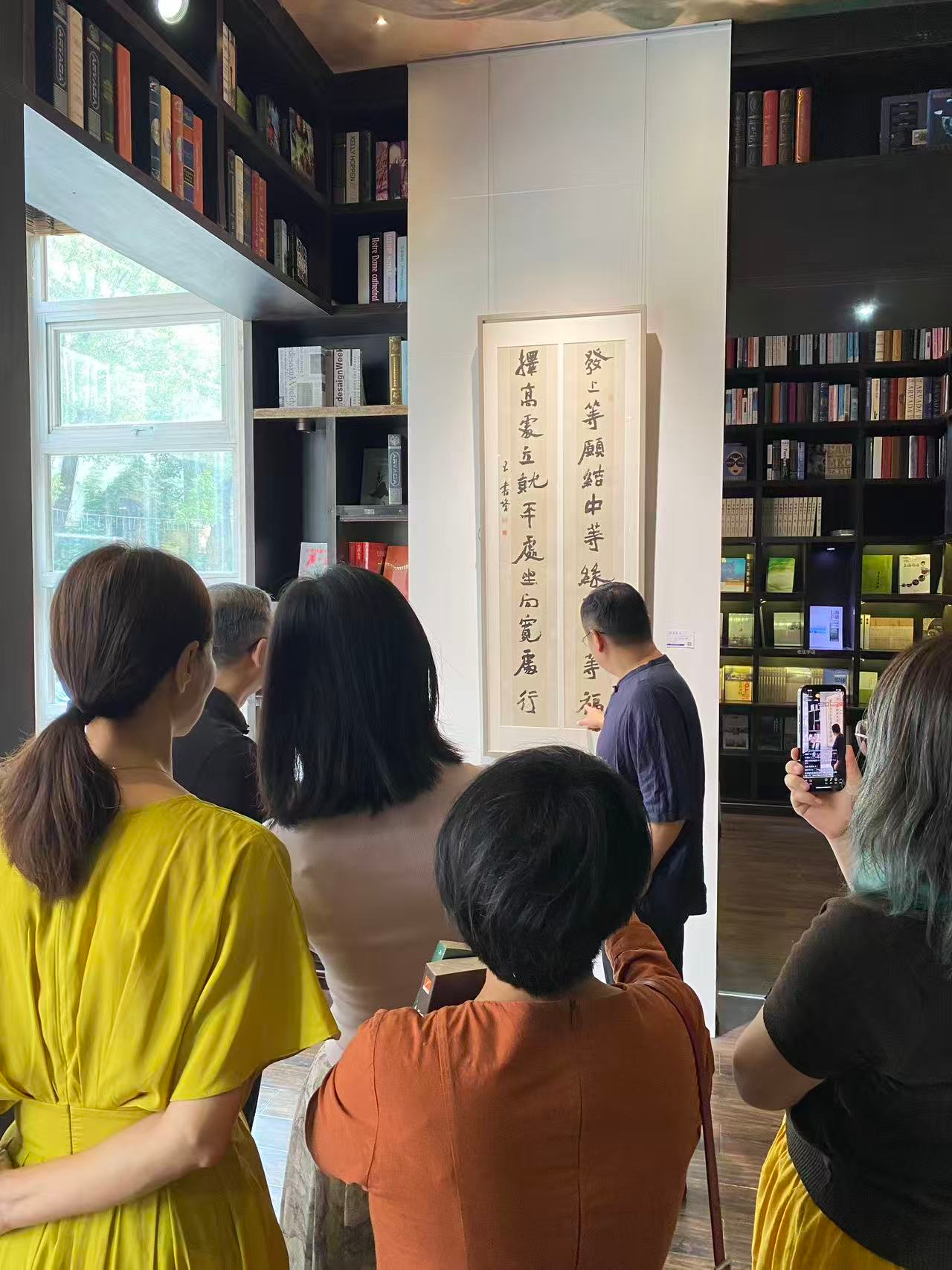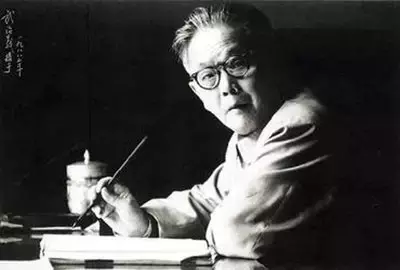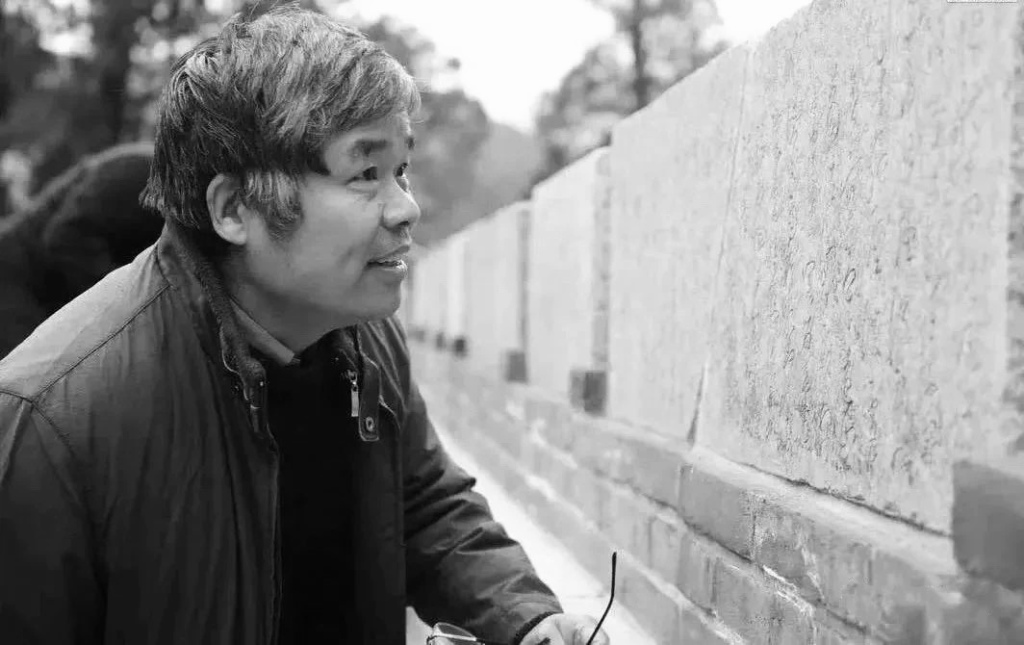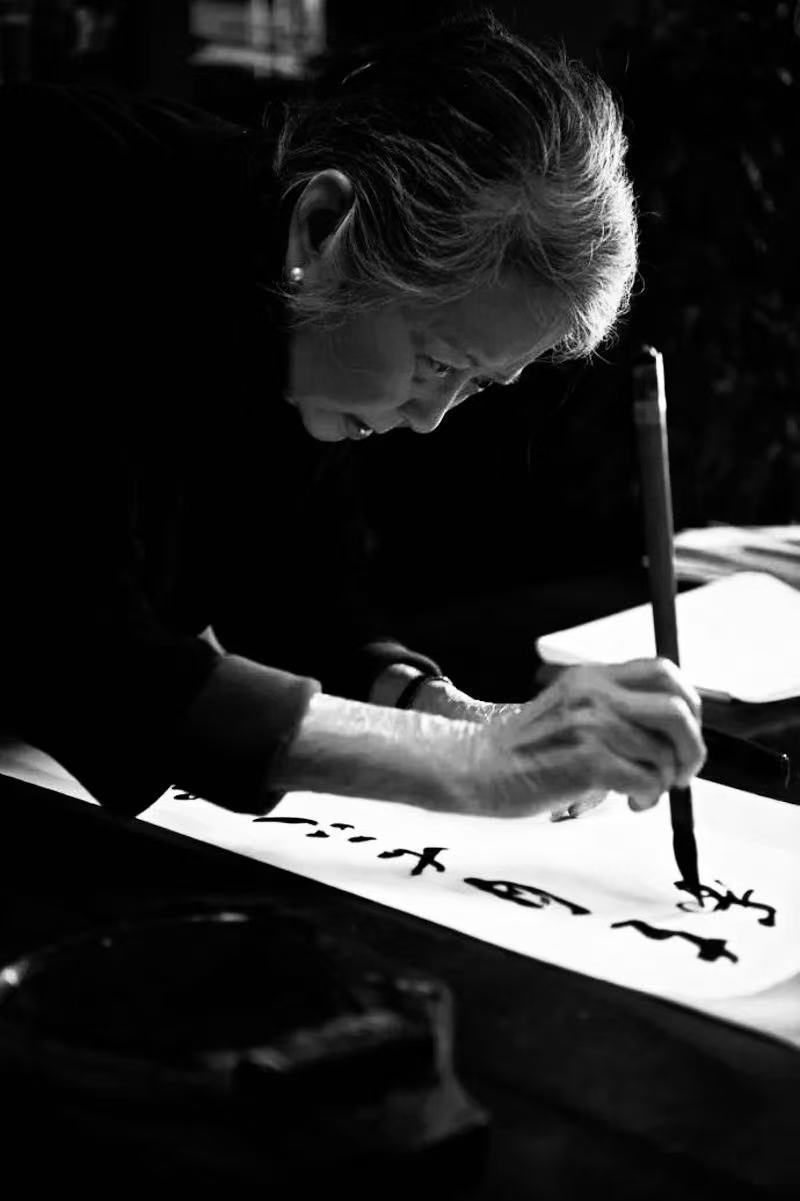
"Cultivation Remains: Wang Shufeng's Shanghai Calligraphy Exhibition" was recently held at Feng Art Space | Zhongshuge in Shanghai's Thamestown, known as Songjiang's most beautiful bookstore. The exhibition showcases the culmination of Wang Shufeng's recent creative efforts, encompassing 50 works from various script styles, including the running script "Su Zhe's Essay," the seal script "Five Poems of Su Zhe," the regular script "Du Fu's 'Spring Night Joyful Rain,'" the cursive script "Zheng Banqiao's 'Hsinchu,'" and the official script "Du Fu's 'View of the Mountain.'"

Exhibition site
The four characters "Siwen Zai Yan" (meaning "where culture resides"), from the Analects of Confucius, Zihan, symbolize the inheritance of culture and context. This exhibition reflects Wang Shufeng's reflections on the distinction between elegance and vulgarity and his pursuit of the beauty of harmony. It also responds to the question of "how calligraphy becomes a vehicle for the soul."
The land of Qi and Lu, the birthplace of Confucius and Mencius, has long been a cultural plateau steeped in cultural heritage and brimming with talent. Young calligrapher Wang Shufeng emerged from this fertile soil, rising from humble beginnings to conquer the world of calligraphy with a single brush, becoming a true "slash youth"—sometimes teaching at university podiums, sometimes reaping the rewards of awards, and more often deeply immersed in creative practice and teaching, effortlessly navigating these multiple roles. Wang Shufeng has a deep understanding of classic calligraphy and stone tablets from past dynasties, and in his work, he prioritizes the integration of calligraphy and stone tablets.

Su Chewen's Running Script, 238×128cm

Du Fu, "Delightful Rain on a Spring Night", regular script, 45×35cm
He believes that creating works in multiple scripts requires facing various issues, including the choice of style, pen, paper, ink, and the use of steles and calligraphy. "In daily life, writing in multiple scripts should be a daily practice for calligraphers. Seal script, clerical script, regular script, running script, and cursive script should all be practiced in their own way, yet all be integrated into one. Seal script should contain clerical script, clerical script should contain seal script, regular script should contain running script, running script should contain cursive script, and cursive script should contain seal script, applying colors according to the type, following the natural way."
This exhibition is innovative in its format, infusing an artistic atmosphere into the bookstore space. Wang Shufeng will be on-site at the store, creating impromptu works for readers, who can designate the content and witness the creation of their works live. The exhibition has attracted numerous calligraphy enthusiasts, students, and residents. It will run until October 10th.
Further reading | Yichuan: Life is everywhere in the brush and ink
The land of Qi and Lu, the birthplace of Confucius and Mencius, has long been a cultural plateau steeped in cultural heritage and brimming with talent. Young calligrapher Wang Shufeng emerged from this fertile soil, rising from humble beginnings to conquer the world of calligraphy with a single brush, becoming a true "slash youth"—sometimes teaching at university podiums, sometimes reaping the rewards of awards, and more often, deeply immersed in creative and teaching practice, effortlessly juggling multiple roles.
His fervent love for life is the inexhaustible source of his artistic creativity. "Why is the water so clear? Because it flows from a source of living water." The source of Wang Shufeng's calligraphy is the vibrant energy of life. He is not confined to the small world of his study, but rather guided by the needs of life, tailoring his brush and ink to suit his daily needs. This places extremely high demands on him: he must master seal, clerical, regular, running, and cursive scripts, possessing a profound academic background and strong adaptability to accurately capture and respond to the pulse of the times.
He keenly perceives that our contemporary world is undergoing profound transformation. People's aesthetic values are becoming more diverse and personalized, and their demand for art is shifting from appreciation to participation and resonance. Rapid technological advancements are providing new possibilities for artistic expression and dissemination. It is at the intersection of these three trends that Wang Shufeng has found his creative direction. He skillfully adapts the meaning of Guan Daosheng's lyric, "You and I," blending the traditional charm of brush and ink with contemporary sensibility. This fusion of "you in me, me in you" imbues the ancient art of calligraphy with new life in a contemporary context, embodying Liu Xie's observation that "literature changes with the world's sentiments, its rise and fall depend on the passage of time."
"The heart feels sorrow and joy, and the voice of song and chant is revealed." The highest realm of calligraphy lies in conveying emotion through brush and ink. Wang Shufeng's work is always driven by a fiery heart—there is no greater sorrow than a dead heart; without a warm heart, how can the pen and ink convey deep emotion? His calligraphy not only expresses his own true feelings but also resonates with others. Whether it's the powerful and rhythmic expression of his sentiments about his country or the elegant and free-spirited depiction of the joys of life, his works are all born from emotion and flow from feeling, truly embodying the principle of "words are the voice of the heart, calligraphy is the painting of the heart."
His homage to classics and embrace of the future imbue his calligraphy with a profound sense of life, a quality that fuels his unique contemporary expression. He refines his style through the intersection of life and art, ultimately embodying the profound meaning of "art is life." The sophistication of his calligraphy lies not in the complexity of technique, but in the genuineness of emotion, the depth of meaning, and the novelty of context—a truly moving expression of our time.


